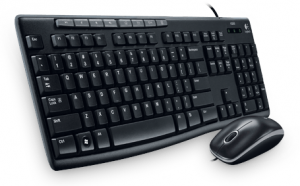Lesson Contents
 Friday the 13th, 5:45 am in the morning…still in bed after a short night since I’m still excited/anxious about yesterday’s CCIE Routing & Switching lab attempt. I rub the sleep from my eyes, take my cellphone and I see a message that says that my results are published on the Cisco website.
Friday the 13th, 5:45 am in the morning…still in bed after a short night since I’m still excited/anxious about yesterday’s CCIE Routing & Switching lab attempt. I rub the sleep from my eyes, take my cellphone and I see a message that says that my results are published on the Cisco website.
I jump out of my bed and sprint faster than Usain Bolt to my laptop in the living room to view the results. My hands are shaking as I open my browser and log in at Cisco.com…
I can’t believe what I see…the word “Pass” is staring at me…CCIE #41726 is gazing upon me. After countless of hours reading, studying, labbing, frustration, and excitement it has finally come to an end!
Since you are reading this my guess is that you are also looking to become CCIE certified. I’d like to share with you how it started for me, prepared myself, and studied, and what the lab was like.
It starts with a dream…
 Back in 2009/2010, I was working as a CCSI (Cisco Certified System Instructor) teaching mostly CCNA/CCNP R&S classes. To feel confident in the classroom it is important to know your stuff since you don’t want a situation where the students know more than the teacher. Having the highest level of certification adds to your credibility and once you walk through the CCIE R&S material you’ll have seen most of the things you can do with a router or switch.
Back in 2009/2010, I was working as a CCSI (Cisco Certified System Instructor) teaching mostly CCNA/CCNP R&S classes. To feel confident in the classroom it is important to know your stuff since you don’t want a situation where the students know more than the teacher. Having the highest level of certification adds to your credibility and once you walk through the CCIE R&S material you’ll have seen most of the things you can do with a router or switch.
To me, pursuing CCIE was not a matter of whether should I do it but a matter of how I was going to do this! Once the idea of CCIE popped into my mind it started to grow until I couldn’t stop thinking about it.
So why did it take so long to become certified? As I am writing this it took me 4-5 years to turn the idea of becoming CCIE into reality. Let me tell you why it took so long…
There’s always something…
 One of the difficulties of CCIE is that there is a LOT of material to cover and it takes a LOT of time to do it. There are no shortcuts, and you need to work hard to make it to the end. I passed my CCIE written on 13 September 2013 and did the lab on 12 December 2013. Between those two days were three months of full-time studying, six days a week doing 8 to 10 hours of labbing per day.
One of the difficulties of CCIE is that there is a LOT of material to cover and it takes a LOT of time to do it. There are no shortcuts, and you need to work hard to make it to the end. I passed my CCIE written on 13 September 2013 and did the lab on 12 December 2013. Between those two days were three months of full-time studying, six days a week doing 8 to 10 hours of labbing per day.
In those 3 months, I only did labs, labs, and even more labs. I already spent a lot of time reading all the different CCIE books in the last couple of years. I was lucky enough to be able to study full time, if you have to do this next to a full-time job you will have to do everything on the weekends and evenings.
This means you probably have to give up an entire year of free time, spending all of your time preparing for CCIE.
That was the biggest problem for me because there’s always something else you want/have to do. For me, there were courses to teach, interesting projects, cool movies to watch, fun things to do with friends/family, and so on.
If you want my #1 advice for passing the CCIE lab, I’ll give it to you right now:
Don’t plan to do it, but do it right now. Get your credit card and book a seat. I did my CCIE written back in 2010, but my mistake was not to pay for the lab right away. As a result, I would study hard for a few weeks and then slack off for a couple of months. My CCIE written expired and I had to do it again. If you don’t book the exam and lab ASAP it will always remain some “commitment” in the future that will never occur. As soon as you pay for it it becomes definite, and something will shift in your brain.
For me, CCIE suddenly wasn’t something I would do sometime, but it became very clear…I had to get rid of all distractions because…
12 December 2013 was judgment day!
You need to figure out for yourself how badly you want to become CCIE. Are you able to commit yourself to this and spend all your spare time studying and doing labs for a long time? Spend less time with your spouse, friends, and family? Stop doing all the fun things you enjoy doing?
If so…keep reading!
Plan the work and work the plan…
If you want to become a CCIE, there’s nothing stopping you….good! Now you need a battle plan to conquer the enemy that is the lab. You could easily spend days reading about CCIE strategies, but extremely simplified, this is what you should do:
- Get support from your spouse, boss, friends, and family.
- Book the CCIE written exam ASAP.
- After passing the CCIE written exam, book your lab ASAP.
- Buy all the required CCIE books, and take a look at my CCIE book reading list.
- Buy CCIE training material from one of the vendors (I’ll tell you about it in a bit).
- Study, study, study.
- Pass the lab.
Get support
 Before you dive into the technical stuff, you should get support from the people close to you. Talk to them about the CCIE exam, especially if they never heard about it before. Most people are only used to studying a few days or weeks for an exam, and that’s it. Since you are going to commit to CCIE for a long time, everyone around you should understand this and support you.
Before you dive into the technical stuff, you should get support from the people close to you. Talk to them about the CCIE exam, especially if they never heard about it before. Most people are only used to studying a few days or weeks for an exam, and that’s it. Since you are going to commit to CCIE for a long time, everyone around you should understand this and support you.
Talk about it with your spouse, and make sure they understand you will spend a lot of time behind your computer looking at diagrams with squares and circles typing mumbo jumbo on a terminal screen. Make CCIE a goal not just for yourself but for the two of you or your family. Once you pass the lab, your career might go fast forward, so make sure you are all on the same team.
See if your boss can give you extra time off for your preparation. Make sure he/she understands that it’s not just a personal goal but having a CCIE at the company can have advantages. Extra time is especially important in the final preparation for your lab exam.
Another form of support that is highly recommended is having a study partner. Just make sure he/she is just as committed as you are and that the two of you are on the same level.
I don’t have a boss, but I talked about it with my wife and explained that it would take me roughly 3 months of studying full time. She supported me all the way through while I locked myself up in my Cisco cave…
Book the CCIE written exam
As I explained before, there is always something in between. Get one of the CCIE-written books out there, study for it, and pass the exam. This is something you have to get out of the way so you can focus on your real goal….the CCIE lab.
CCIE Books
You can find the books that I read in my CCIE Book Reading List post that I created earlier.
CCIE Training Material
This is an important step in your preparation. When you are studying you can read books, and build some labs of your own but what you really need is a complete package.
There are many vendors like INE.com, IPexpert, Narbik and such that sell complete CCIE R&S self-study packages. I used the workbooks from INE.com so let me explain a little what their workbooks are about.
There are four workbooks:
- Volume 1: Advanced Technology Labs
- Volume 2: Full-Scale Practice Labs
- Volume 3: Advanced Foundation Labs
- Volume 4: Advanced Troubleshooting
The first workbook has labs where you focus on 1 topic at a time, you’ll see everything…OSPF, EIGRP, BGP, MPLS, and so on. Everything from the CCIE blueprint. Volume 2 has 20 labs that are similar to the real lab.
Volume 3 is all about speed, to help you configure the layer 2 and 3 portions of the real lab as fast as you can. Volume 4 has troubleshooting labs. These are pre-configured networks with errors so you can become a better troubleshooter.
The advantage of a complete training package is that you don’t have to waste your time thinking up labs and building network topologies. Most of these vendors offer you a complete package, and you can use rack rentals so you don’t have to worry about any hardware. Personally, I wasted a lot of time trying to make things work with GNS3 or real hardware. I think it’s better to use rack rentals so you can spend 100% of your time studying.
Study
 This is where the real work starts…there are many different study plans, but I’ll tell you what I did.
This is where the real work starts…there are many different study plans, but I’ll tell you what I did.
Back in 2010, when I started studying, the first thing I did was book the CCIE written exam, pass it, and read the books that I found on the different CCIE reading lists. I would read one book at a time and then create some labs for myself to try the things I read about in the book. I did this to make sure I fully understood everything. I also created mindmaps and saved a lot of commands/configuration examples in Notepad, There’s so much to remember so you need to write down the stuff you learn.
Between 2010 and 2013 I started working on the INE.com material, spending a few weeks doing volume 1 and volume 2 labs and then I got distracted again with work / other things to do.
12 September 2013 I passed my CCIE written again, and I immediately paid for my lab seat for 12 December 2013 (the last seat I could get for late December). I started studying Monday to Saturday from 9:00 am – 9:00 pm. This is what my schedule looked like:
- First 5 – 6 weeks, I only did INE volume 1.
- 20 days doing full-scale labs from INE volume 2.
- A week or so troubleshooting INE volume 4 labs.
- A week building up my speed with INE volume 3 labs.
- The remaining weeks I spent redoing full-scale labs from INE volume 2 and repeating some mini labs that I had a hard time memorizing.
For me, this worked very well. I liked the idea of starting with one workbook and finishing it before I moved to the next one. The last 2 weeks before the lab I dreamt about BGP, OSPF, and the lab exam every day.
These colored pens were my best friends for the 3 months I studied full-time, I used them for drawing all those network diagrams. Unfortunately, I wasn’t allowed to bring them with me to the lab.
The Lab
The day before the lab, I didn’t do anything except relax and play some games. If you enjoy working out, this is a perfect day for it. It’s better to save your mental energy for the exam and studying one more day wouldn’t make a difference anymore at this point.
My lab was in Diegem (Brussels – Belgium) which is only about 110 kilometers away from where I live. I booked a hotel anyway because I didn’t want to risk getting stuck in traffic on the exam day.
I woke up at 7:00 am and went for breakfast, ate food that filled me enough so I wouldn’t get hungry during the exam before lunch. The reception at Cisco opened at 8:30 am but I was already there at 8:00 am so I walked around the building for a bit. Some other exam candidates showed up, and we had some small talk about CCIE before the reception opened.
At the reception, you have to register, and you get a sticker that you are here for the CCIE exam. We had to wait for the proctor to show up, and the silence was deadly. Everyone is nervous/anxious so nobody talked much. Finally, the proctor showed up, and we went to the CCIE lab room.
The lab room was good. There is plenty of space between you and the other exam candidates, you have your own desk with a 24-inch monitor, some sheets of paper to draw on, and some pencils. The quality of the pencils was terrible. I had a hard time drawing with them, but I didn’t use them much anyway. I’m not sure which exact keyboard I had, but I think it was a Logitech MK200 or something similar.
Next to the lab room is another room with equipment, and you hear some slight background noise. You might want to bring a sweater or something because if you sit still all day long, you might get cold. The proctor explained to us some of the rules during the exam. Next to the lab room, there is a coffee machine and some toilets. Whenever we wanted to use one of them we could just do it, there was no need to ask the proctor for permission to leave your desk.
The computer you use has a web browser so you can use the support section (DocCD), and it has putty so you can connect to your lab. Normally a right mouse click in Putty will let you paste something, but they changed it so you can get a little pop-up screen when you have to select “paste”. I didn’t mind this, but you might want to try this at home.
Troubleshooting section
I did version 4 of the lab, so it started with a 2-hour troubleshooting section. It takes a few minutes to get used to the computer and get over the “I am finally here – it’s time to dance” feeling. Once I relaxed a little, I started looking at the tickets and the topology. I won’t go into the details of what the topology or tickets looked like, but it took me ~ 30 minutes to solve half of them, which felt good. I spent another hour on the remaining tickets and verifying my work and then clicked the “end session” button since I felt I solved all of them. The cool thing is that you can spend those remaining minutes on the configuration section.
Configuration section
After the troubleshooting section, I felt pretty confident since I solved all the tickets (at least that’s what I thought). If you feel you didn’t do very well at troubleshooting, then it’s going to be a pain to work on the configuration section for the next 6 hours…
I started out spending 10 – 15 minutes looking at the tasks and topology diagrams, seeing if I could combine some things or if there were any pitfalls. There was a lot of stuff to configure, and time management was a huge deal. When I started configuring things I didn’t even touch the console of any of the devices…
I did everything in Notepad. By now, you should be able to dream all the commands, so I created entire sections in Notepad and later pasted them on the devices. When I made a typing error, I fixed it in Notepad and then pasted everything back on the device.
After ~ 3 hours of configuration, I was done but still had to verify everything. I spent the remaining ~ 3 hours (I had 30 minutes extra that I saved from the troubleshooting section) reading each and every task…line-by-line and verifying the output on my devices with show commands. Imagine using a fine hair comb…do not assume that something is correct and check everything. I found a few silly errors and fixed them, and I believe this was the key to my success. It’s also the only moment where I checked the DocCD to verify 1 -2 little things that I wasn’t sure of.
About 20 minutes before the session ended, I was done and hit the “end session” button. I felt good about it but was also happy that it was over. After 8 hours of non-stop focus, you get tired, so I left the building, took my car, and drove home with some nice background music.
Conclusion
So what can I say about this entire, very long journey? First of all…I really enjoyed it! I never had to study so much and for so long, and once you make it to the finish, it feels totally awesome! I learned a lot about discipline by doing labs day after day and putting a lot of hours in it. I can fully understand if someone never wants to do it again, but personally, I see myself doing another CCIE in the future.
The troubleshooting section is really good, I felt that it really tests you on an expert level, and you get enough time for the tickets. The configuration system I didn’t like as much for two reasons:
- The amount of configuration required: Sometimes, I felt the test was about typing speed and being able to use Notepad to quickly generate configurations for all the devices. I’d rather see a higher difficulty that requires more time to think. The lab should be like a chess game, not an endurance race.
- The grading system: The way the exam is graded is poor…very poor if you ask me. You only get points for an entire section, so if you get the section correct, you get 100% of the points. If you missed one little item, then you get 0 points. Imagine there is a BGP section with 15 tasks. If you managed to configure 14 tasks correctly but messed up 1, then you get 0 points. There is no partial credit. The way it is graded is to make you fail…
The CCIE lab exam is supposed to check if you are an expert or not. If you give points for each correctly configured task, then you can check if someone understood the question and award them. Shooting down someone because they “only” configured 99.99% of the section correctly sounds weird to me.
Anyway, I hope you enjoyed this post of my CCIE adventure and that it encourages you on your own CCIE journey. If you have any questions, feel free to leave a comment! Keep in mind that I can’t answer any (technical) questions about the exam contents because of the CCIE NDA.




Nice reading =)
Hello Rene,
Very Nice reading. What about ccie v5? I took a look at your book list, no books for the 5th version. Do you have somme information about it? New books maybe?
Thann you.
Great stor and also inspiring! I passed my CCENT and currently studying for my CCNA. Your frame relay section has helped me out alot! Thank you so much.
Hi rene,
Nice blog and very inspiring for a person who wants to pursue their dreams of becoming CCIE.
Just want to us in doing the LAB you did it with the real hardware or with the GNS3.
Congratulations Brother .Job well done .You had created a lot of good videos in Gns3vault.com.You really deserve it .May be,With GOD Blessings I am also going to attend CCIE lab in future .I will keep your suggestions in my mind .